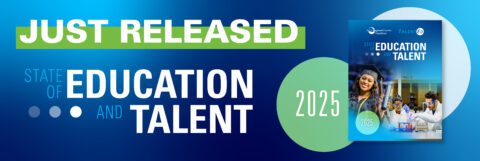- Michigan’s Economic Standing Is Linked to Educational Attainment: Michigan’s drop to 40th in the nation for per capita income highlights a pressing need to improve educational achievement to drive economic prosperity.
- Misconceptions About College Costs Affect Decisions: Both students and parents often overestimate the cost of higher education, which can discourage enrollment. In reality, many Michigan institutions offer significant financial aid and affordable pathways, with average actual costs lower than commonly believed.
- Collaborative Programs Increase Accessibility and Workforce Readiness: Institutional partnerships, transfer pathways, and career-focused programs are making college more accessible and affordable while providing students with hands-on experience and clear routes to high-demand careers.
To hear more insights from the panelists and speakers, watch the full recording of the 2025 State of Education and Talent below.






